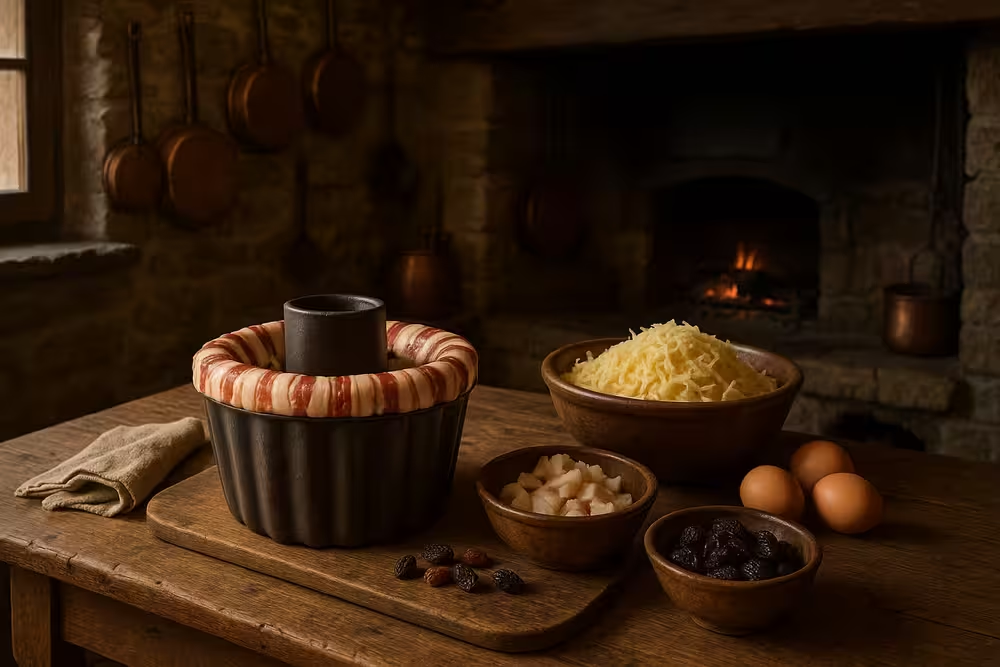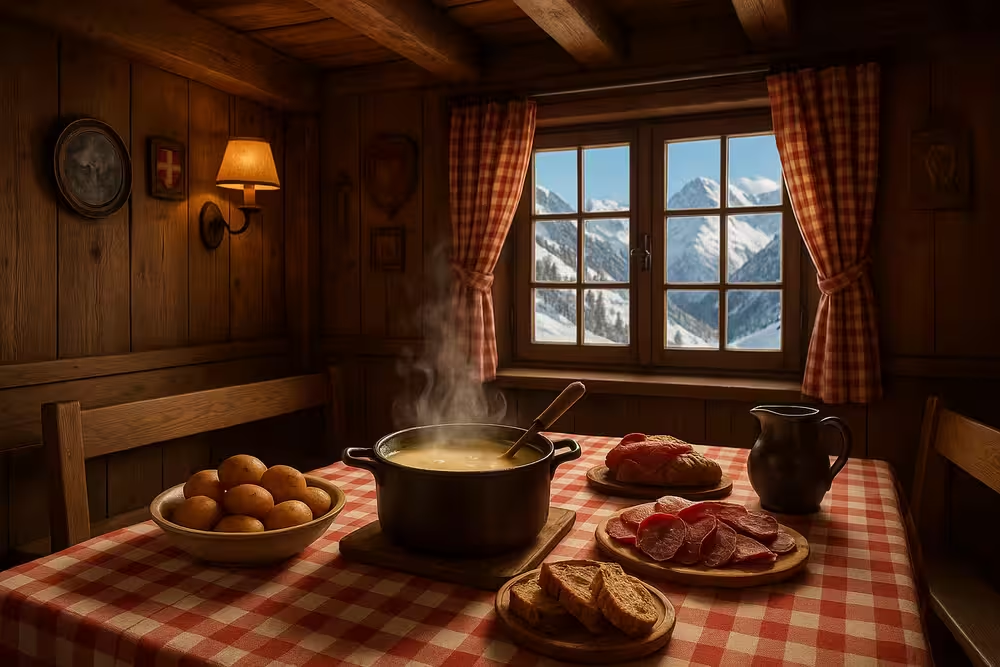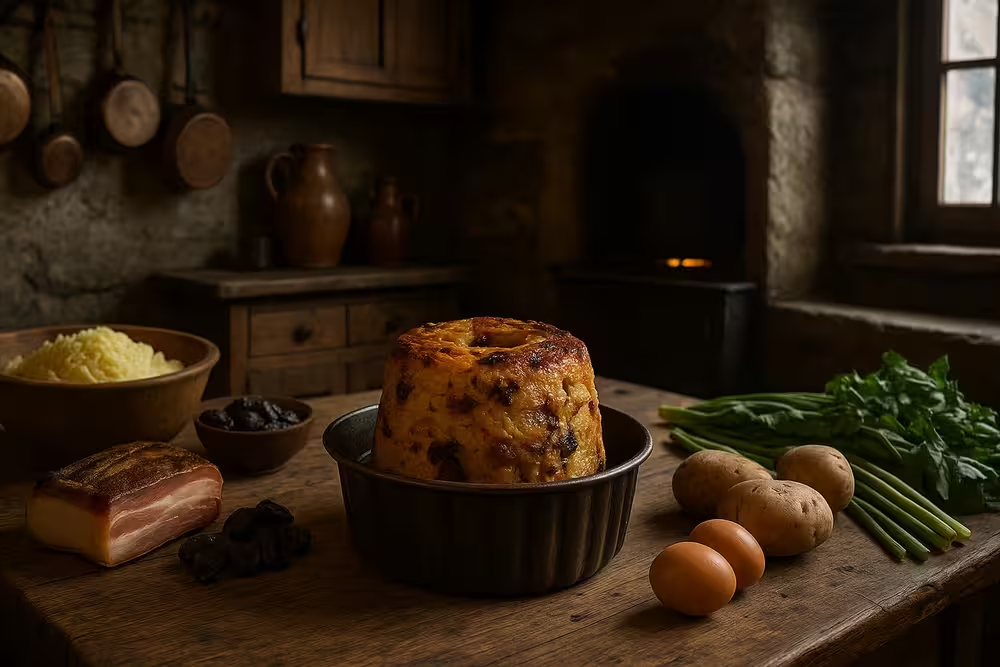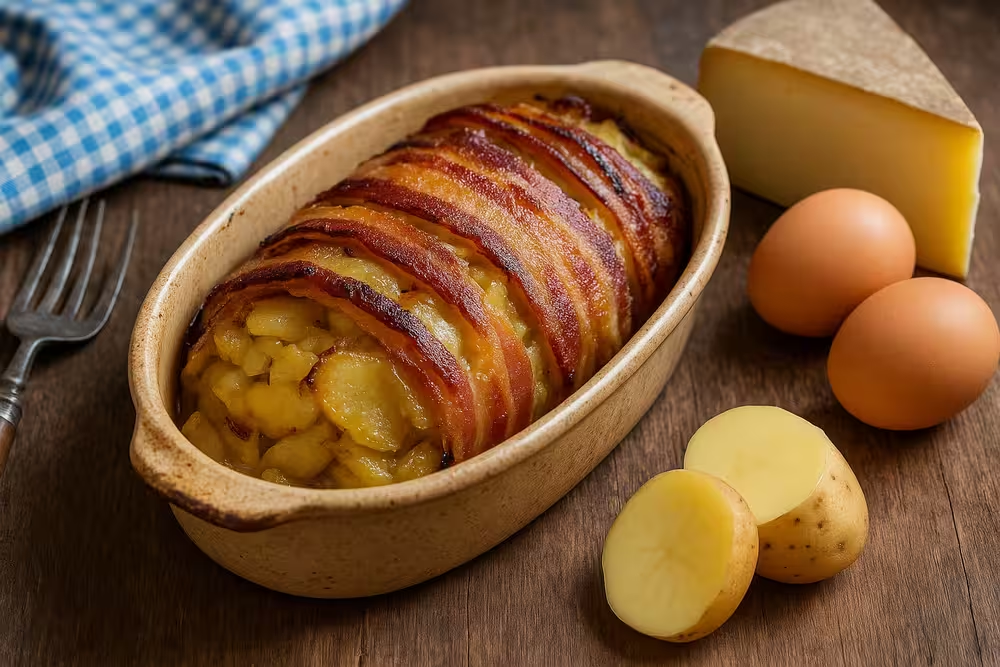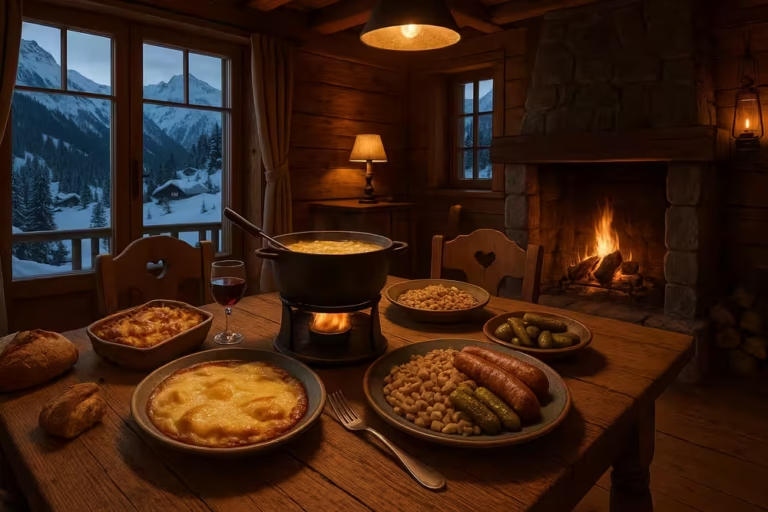Discover 4 authentic and forgotten Savoyard dishes
4 authentic and forgotten Savoyard dishes to rediscover for a gourmet winter in the mountains Explore the little-known flavors of Savoyard cuisine. Discover 4 traditional and comforting dishes to enhance your winter meals in the mountains and enrich your family table.
Discover 4 authentic and forgotten Savoyard dishes
Introduction
Discover 4 authentic and forgotten Savoyard dishes for a gourmet winter. Traditional recipes, mountain flavors and culinary treasures to savor.
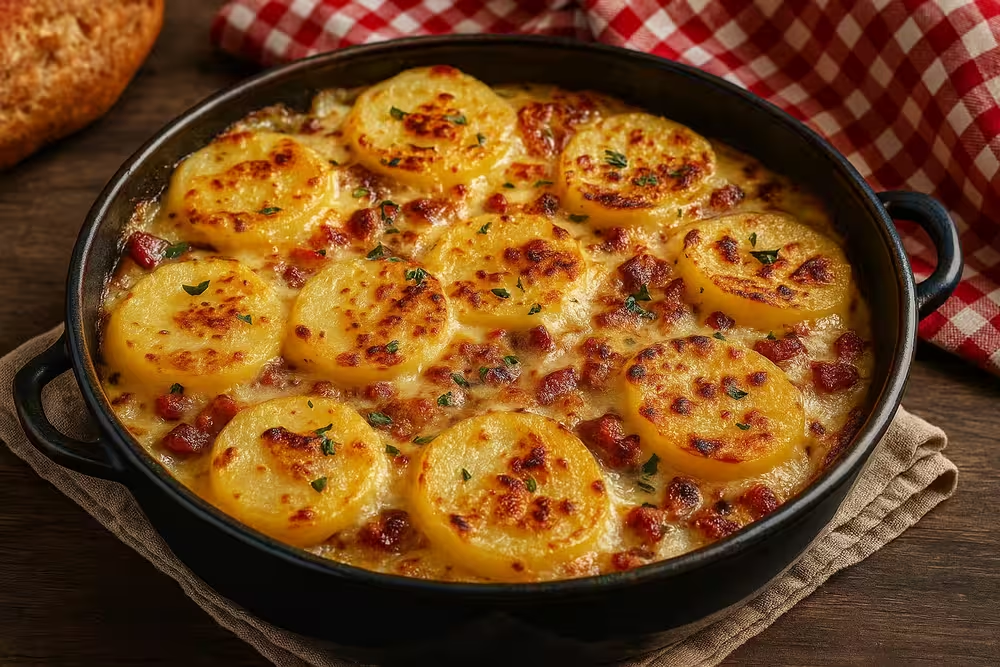
Looking for a change from traditional Savoyard raclette or fondue? The mountains of Savoie abound in little-known culinary treasures. Behind each forgotten dish lies a story of terroir, families and ancestral know-how. This winter, discover authentic, hearty recipes, ideal for meals at altitude. From farcement to matouille or pormoniers, these rustic dishes will awaken your taste buds and enrich your table. Bring these mountain dishes back to life and savor the true soul of Savoyard cuisine. Follow the guide for a gourmet journey off the beaten track.
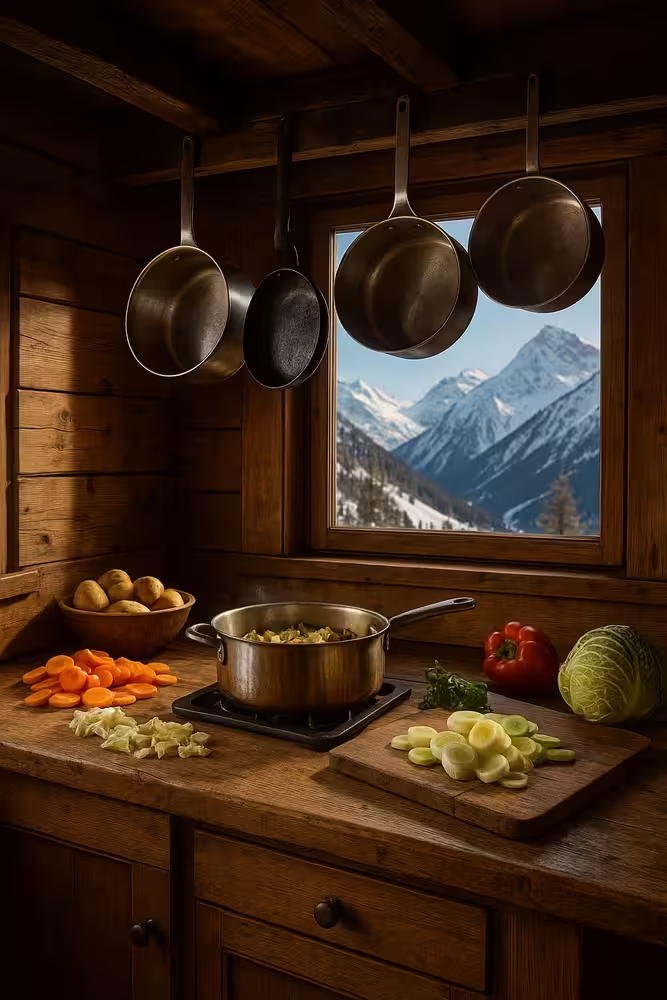
4 authentic and forgotten Savoyard dishes to rediscover for a gourmet winter in the mountains
Savoyard stuffing: the sweet and savoury dish emblematic of the mountains
Origins and history of farcement in Savoie Originating in the Beaufortain and Val d'Arly valleys, Savoyard farcement is a rustic dish that originated in peasant cooking. Once prepared on Sundays or at village feasts, this convivial dish simmered slowly while families went about their business. A true symbol of Alpine culinary heritage, it bears witness to a time when simple local products were sublimated. The chimney mould, known as a râpon or raboton, gives the stuffing its characteristic crown shape, evoking the age-old traditions of mountain homes.
Traditional ingredients and local variations Stuffing is distinguished by its surprising combination of sweet and savoury flavours. The base: grated potatoes mixed with eggs, cream and dried fruits such as prunes and raisins. Lardons or slices of bacon line the mold, providing a tasty contrast. Each valley perpetuates its own version, some incorporating dried pears or apricots for a fruity touch, others flavoring the whole with nutmeg or cinnamon. This blend of textures and aromas makes for a mountain specialty that's both hearty and delicate.
Preparation secrets for a successful stuffing The secret lies in slow cooking, often for six hours, at low temperature. The buttered mold is lined with lard before receiving the creamy preparation. As the hours go by, the stuffing caramelizes, releasing a bewitching aroma. Controlled cooking ensures a slightly crispy crust and a melting center. The choice of potatoes is crucial: they must contain just the right amount of starch to ensure the dish holds together. Particular attention is paid to the distribution of dried fruits to achieve a harmonious balance in the mouth.
How to serve it: side dishes and special occasions Served in thick slices, stuffing is best enjoyed warm, with a green salad spiced with walnuts or baby greens. It goes wonderfully well with a platter of Savoy charcuterie and a glass of Apremont or Mondeuse. A perfect sharing dish, it lights up winter tables at family dinners or evenings with friends. In the heart of the mountains, farcement perpetuates the art of generous cooking, resonating with the timeless conviviality of Savoyard villages.
4 authentic and forgotten Savoyard dishes to rediscover for a gourmet winter in the mountains
Matouille savoyarde: the little-known alternative to fondue
What is matouille? A specialty worth rediscovering A discreet heir to the Savoyard table, matouille embodies the art of sublimating simple ingredients. Less famous than fondue or raclette, this ancestral dish is based on a melt-in-the-mouth preparation of fresh tomme cheese. Once cooked in the thatched cottages of the Tarentaise region, it was enjoyed during winter evenings, warming body and soul. Matouille illustrates an authentic mountain tradition, based on economy of means and the richness of the terroir. A culinary treasure trove that lovers of Alpine gastronomy are delighted to rediscover.
Key products: fresh tomme and white wine At the heart of the recipe, fresh Savoy tomme, made from raw milk, gives the matouille its uniqueness. Melting without excess, it releases subtle aromas when impregnated with the dry white wine used for cooking. Local vintages such as Apremont or Chignin are preferred, adding a fruity, mineral touch. Garlic, pepper and sometimes nutmeg are added to spice things up. Some variants add a touch of heavy cream for extra smoothness. Meticulous selection of ingredients guarantees a symphony of harmonious flavors.
Step-by-step preparation of matouille savoyarde The preparation of matouille requires a slow and delicate process. The tomme is cut into pieces and placed in a garlic-rubbed caquelon. Drizzled with white wine, it melts gently over moderate heat, without boiling, to preserve its creamy texture. Stir regularly with a wooden spatula to achieve an even consistency. At the end of cooking, a turn of the pepper mill completes this simple yet generous dish. The success of matouille lies in the alchemy of patience and heat control.
Tips for turning your matouille into a convivial meal Matouille is best served with steamed potatoes, accompanied by mountain charcuterie such as cured Savoy ham, smoked diots or artisanal coppa. A lightly toasted farmhouse bread accentuates its comforting character. For a perfect match, a chilled Savoy white wine enhances the milky sweetness of the melted cheese. In winter, matouille is an original alternative to enrich a mountain dinner, offering each guest a memorable and convivial taste experience.
4 authentic and forgotten Savoyard dishes to rediscover for a gourmet winter in the mountains
Pormoniers savoyards: herbed sausages from the Alps
History and origins of pormoniers in Savoie Pormoniers, also known as pormoniers or herb sausages, are part of the culinary heritage of the Alpine valleys. This rustic dish, born of the good sense of the peasants, made the most of local offal and wild herbs. Each family developed its own recipe, jealously handed down from generation to generation. Present on markets from Chambéry to Thonon, these meaty delicacies are a welcome accompaniment to winter meals. An emblem of mountain cuisine, pormonier celebrates the ingenuity and generosity of Savoyard country cooking.
The ingredients that make pormonier so delicious Pormonier consists of a tasty minced pork and offal, subtly balanced by an assortment of vegetables and aromatic herbs. Spinach, chard, leeks, parsley and garlic give the stuffing a fragrant vegetable dimension. The mixture is then stuffed into a natural casing, preserving all its rich flavor. Each producer adapts the recipe according to local resources and family traditions. This diversity makes pormonier a culinary treasure trove of a thousand nuances.
Modes de cuisson traditionnels pour révéler les arômes La cuisson des pormoniers requiert une attention minutieuse. On les poche d’abord à feu doux pour préserver leur moelleux et exalter les arômes. Une cuisson trop vive risquerait d’altérer leur texture délicate. Certains préfèrent les poêler légèrement après pochage, afin de leur offrir une fine croûte dorée. Servis fumants, les pormoniers dévoilent un bouquet de saveurs complexe où la viande se mêle harmonieusement aux herbes fraîches. Un plat de caractère, parfait pour sublimer un repas hivernal en montagne.
What to serve Pormoniers with for a balanced meal Pormoniers are ideal with jacket potatoes or creamy polenta. A salad of lamb's lettuce or baby greens adds a welcome touch of freshness. As for beverages, a light red wine such as a Gamay from Savoie will underline the herbaceous notes of the dish. Particularly appreciated at local festivals and convivial gatherings, pormoniers offer a true gustatory voyage to the heart of Savoyard traditions. A specialty to be (re)discovered without delay.
4 authentic and forgotten Savoyard dishes to rediscover for a gourmet winter in the mountains
Matefaim savoyard: the ancient thick pancake of Savoyard farmers
A rustic dish steeped in culinary memory Matefaim, literally “mange-faim”, embodies the frugal and inventive spirit of Savoy's peasant kitchens. Designed to satiate field workers, this thick pancake was prepared with the simplest ingredients: flour, milk, eggs and sometimes a touch of cream. Cooked in a hot pan, matefaim was golden on the outside and tender at the core. Today, it perpetuates the gourmet memory of the evenings of yesteryear, when we shared these comforting and generous galettes around the stove.
The different versions of matefaim: sweet and savory Matefaim comes in a myriad of variations. The savory version, with bacon, diced cheese or grated vegetables, was once the main course of a modest meal. The sweet version is enriched with seasonal fruits: apples, pears, blueberries or prunes, delicately caramelized. Each valley, each Savoyard family, had its own recipe, handed down like a treasure. This diversity of interpretations gives matefaim a unique place in the culinary heritage of the Alps.
The traditional recipe for an authentic matefaim The preparation of matefaim involves simple but precise steps. A thin batter is made by beating flour, eggs and milk, with a pinch of salt. After a rest, the dough is poured into a generously buttered frying pan. Slow cooking over moderate heat ensures a soft, almost melt-in-the-mouth texture. For sweet versions, fruit is added during cooking, giving the matefaim an irresistible aroma. This simple dish sublimates everyday products with timeless charm.
How to integrate matefaim into a modern mountain menu Today, matefaim is perfectly at home on a contemporary mountain table. In its savory version, it's the perfect accompaniment to a salad of baby greens or a root vegetable velouté. As a dessert, served warm with a quenelle of crème fraîche or a scoop of vanilla ice cream, it's a real treat for the taste buds. This ancestral dish, easy to prepare, will appeal to lovers of authentic cuisine. An invitation to revisit the forgotten flavors of Savoy.
Conclusion
Rediscovering authentic Savoyard dishes means plunging into the heart of Alpine traditions. Farcement, matouille, pormoniers, matefaim... so many forgotten recipes that tell the gourmet story of our mountains. At a time when winter invites comfort, these generous dishes sublimate every meal at altitude. They awaken the taste buds and nourish the soul. Would you like to add to your notebook of mountain recipes? Explore our other articles dedicated to traditional Savoyard cuisine and get inspired for your next convivial meal. Treat your table to a sensory voyage to the heart of the Alps. Click here to discover other culinary treasures.
Articles that may interest you
Discover the resort
Our selection of restaurants in Les 2 Alpes
Our selection of stores in Les 2 Alpes
Movies, bowling, laser tag: your indoor activities
Ski schools: our selection
Frequently asked questions
Find answers to the most common questions about our products. Julia ensures transparency, efficiency, and detailed information in everything we do.

Discover tips, trends and ideas to help you prepare for your stay in the mountains, and discover fantastic places and addresses. Julia and the team regularly prepare new articles for you, so don't hesitate to visit our blog regularly.
Find the best moments from your article
